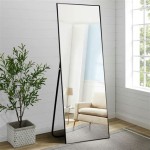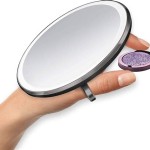What Does "Enable Mirror Effect" on Zoom Mean?
The "Mirror Effect" setting in Zoom refers to how one's own video feed appears to themselves during a meeting. Enabling this effect creates a mirrored view, similar to looking in a mirror. This means that movements appear reversed: raising a right hand appears as raising a left hand in the self-view window. Disabling the effect displays the self-view as others in the meeting see it, a non-mirrored or "true" view. While seemingly a minor detail, understanding the implications of this setting can significantly impact the user experience.
The primary benefit of the mirrored view stems from its familiarity. People are accustomed to seeing a mirrored image of themselves. This familiarity makes it easier to navigate the video space, particularly when making adjustments to appearance, such as fixing hair or glasses. Attempting such actions while viewing a non-mirrored image can be disorienting and lead to awkward, reversed movements.
Consider the scenario of holding up a document to the camera. With the mirror effect enabled, the user sees the document as they would if holding it up to a mirror. They can intuitively orient the document so that the text is readable to themselves. This mirrored orientation, however, presents the text backward to other meeting participants. Disabling the mirror effect in this case ensures that the document appears correctly to the audience, albeit at the cost of the presenter's ease of manipulation.
From a communication standpoint, mirrored video can contribute to a more natural feeling of connection. Subtle cues like hand gestures and facial expressions appear as expected within the self-view, aligning with the user's ingrained sense of self. This can lead to a more relaxed and comfortable on-screen presence.
However, the mirror effect can also lead to confusion, particularly when interacting with on-screen elements or other participants. For example, pointing to something on a shared screen can feel counterintuitive in a mirrored view. The user might instinctively point to the left when intending to indicate something on the right side of the shared screen. This discrepancy can lead to miscommunication and a less effective presentation.
Zoom’s default setting enables the mirror effect for the self-view. This default caters to the majority of users who prioritize the comfort and familiarity of a mirrored image. However, Zoom provides the flexibility to toggle this setting on or off depending on individual preferences and specific meeting needs. Understanding how to adjust this setting is essential for optimizing the Zoom experience.
Locating the "Mirror Effect" setting within the Zoom application is straightforward. During a meeting, users can click on the up arrow next to the "Start Video/Stop Video" button. This reveals a menu of options, including "Video Settings." Selecting this option opens a new window where the "Mirror my video" checkbox can be found under the "Camera" section. Checking the box enables the mirror effect, while unchecking it disables the effect.
The implications of enabling or disabling the mirror effect extend beyond individual preference. Specific scenarios might benefit from one setting over the other. Presentations involving on-screen interaction or the display of physical objects, for instance, often benefit from disabling the mirror effect to ensure accurate representation to the audience. Conversely, casual conversations and meetings primarily focused on verbal communication might be more comfortable with the mirror effect enabled.
Ultimately, the choice of whether to enable or disable the mirror effect in Zoom is a matter of personal preference and situational awareness. By understanding the functionalities and implications of this setting, users can tailor their Zoom experience to enhance comfort, clarity, and effective communication.
Regularly evaluating one’s use of the mirror effect and adjusting it based on the context of each meeting can lead to a more productive and engaging online interaction. This small yet significant feature contributes to a smoother and more intuitive online meeting experience.
Furthermore, adapting to both mirrored and non-mirrored views can improve spatial awareness within the digital environment. Practicing with both settings can help users become more comfortable navigating and interacting with on-screen elements regardless of the mirroring status.

Easy Steps To Mirror My On Zoom

How To Mirror On Zoom Flip Left Right

What Does Mirror My Mean In Zoom
Zoom Filter Makes You Look Better During Work From Home Conference Calls

Easy Steps To Mirror My On Zoom

Easy Steps To Mirror My On Zoom

What Is Mirror My On Zoom How It Works And Should You Enable

What Is Mirror My On Zoom How It Works And Should You Enable

Images Show In Reverse Or Upside Down Windows 11 10

Zoom S Tips Secret Tools To Enhance Your Meetings








